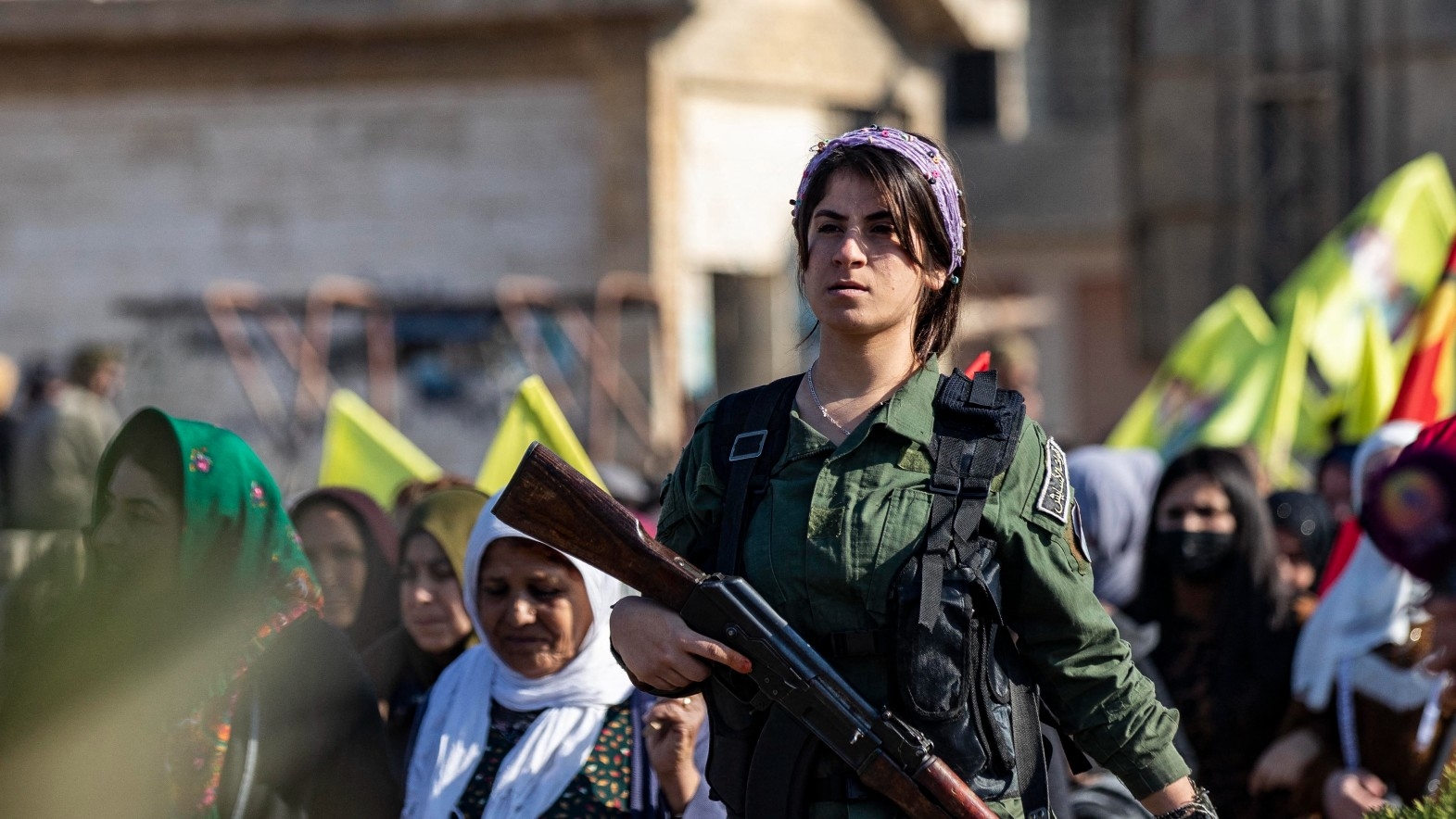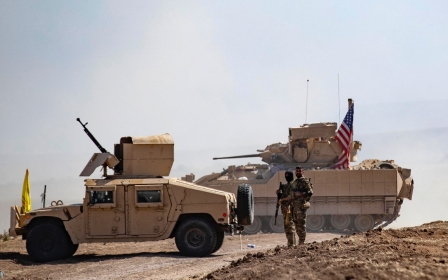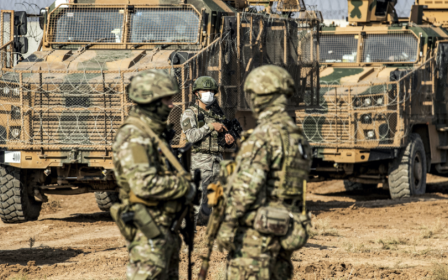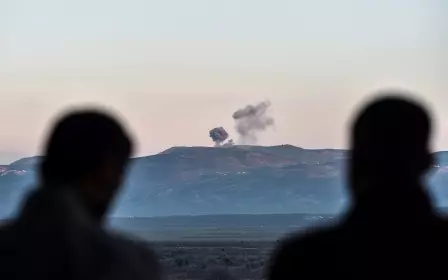Why Rojava could face a slow death by a thousand cuts

The latest reports from northern Syria suggest that another Turkish incursion into territory held by the Kurdish-led Syrian Democratic Forces (SDF) could be imminent.
As occurred in 2018 and 2019, Ankara’s goal would be to capture a strip of land along the Turkish-Syria border, expel the SDF forces and invite its pro-Turkish Syrian rebel allies to rule a friendly satellite instead.
The Kurdish Democratic Union Party (PYD), which dominates the SDF coalition, has long feared abandonment by Washington - with good reason
Alarmingly for the SDF, reports increasingly suggest that its key ally, the United States, might be willing to quietly accept a limited incursion as a price worth paying to placate Turkey.
The Kurdish Democratic Union Party (PYD), which dominates the SDF coalition, has long feared abandonment by Washington - with good reason. The US ditched its Iraqi Kurdish allies in the 1970s when it no longer needed them and, more recently, did little to defend the Kurdish position in Kirkuk in 2017.
Similarly, the 2021 withdrawal from Afghanistan saw US allies defeated by the Taliban just days later. This history prompts concerns that one day soon vital American air cover and special forces will be withdrawn, leaving the autonomous region of northeastern Syria controlled by the SDF, called Rojava by some, facing sudden collapse under a Turkish onslaught.
New MEE newsletter: Jerusalem Dispatch
Sign up to get the latest insights and analysis on Israel-Palestine, alongside Turkey Unpacked and other MEE newsletters
Different kind of threat
But Turkey’s latest proposed incursion, and its past two invasions, point to a different possible fate for Rojava. Rather than the sudden withdrawal of the US, it is plausible that Washington does intend to remain in eastern Syria for some time. However, its willingness to accept occasional Turkish capture of SDF territory poses a different kind of threat: that collusion by outside players will see Rojava gradually eroded one piece at a time, leaving a weak rump behind.
Already Turkey has taken two major bites out of Rojava. Losing Afrin in 2018 was a symbolic and strategic blow, being historically a key base for the PYD and ending its presence in northwestern Syria, save for a small base in Tal Rifaat. The incursion of 2019, similarly, saw a key strategic strip along the border lost, including valuable agricultural lands.
Turkish President Recep Tayyip Erdogan reportedly now has his sights on Tal Rifaat, Manbij and Kobane, which would be yet more key strategic losses, reducing the SDF’s presence along the Turkish border.
Symbolically, losing Kobane, the scene of the PYD’s heroic last stand against the Islamic State group (IS) in 2014-15, would also crush Kurdish morale.
Yet Washington, which forged its alliance with the PYD after seeing it defeat IS in that battle, may be willing to allow this. US priorities have changed considerably in the intervening years.
Firstly, IS has largely been defeated, meaning that the US mission is now to prevent a resurgence rather than defeat an embedded force. On the plus side for the SDF, this threatened revival makes Washington reluctant to order a full retreat. On the downside, it requires nowhere near the same physical presence.
Moreover, the US’s attention is on the Iraqi-Syria border in the east, with IS having originated from Iraq, not the Turkish-Syria border in the north, which are the historical Kurdish homelands.
Focusing on the eastern border also serves Washington’s secondary goal of restricting the flow of Iranian convoys heading overland to Damascus and Lebanon. Unfortunately for the SDF, the US can achieve both of these goals without keeping a protective presence along the northern border.
Secondly, the US’s geopolitical priorities have shifted due to the Ukraine war, and the Middle East and Syria are less important. With Turkey emerging as a key mediator between Russia and the west in Ukraine, Washington is far keener to keep Ankara onside than it was during the height of the war with IS.
Placating Erdogan by occasionally blessing incursions against the SDF is an attractive prospect, given that it loses the US little, especially if it can claim to still be supporting the SDF elsewhere in eastern Syria.
Reconciliation with Assad?
For the SDF, however, the prospect of Washington bargaining away its most valuable land in the north is unpalatable, and some have urged a reconciliation with Syrian President Bashar al-Assad and his Russian allies to avoid this.
This has already happened once, in 2019, when SDF commander Mazloum Abdi cut a deal with Moscow to bring Russian and Syrian forces to Kobane to protect it from Turkey.
Some senior PYD figures have long urged some kind of Russian-brokered deal with Assad that allows a degree of Kurdish autonomy under Damascus’s rule in exchange for ejecting the US, whom they see as untrustworthy.
This argument is countered by those who believe that Assad would renege on whatever he promises once US forces have gone.
So long as Washington is willing to let Turkish forces attack the SDF at regular intervals, Erdogan seems happy with the emerging status quo
The irony, of course, is that Ankara would be happy with either outcome. So long as Washington is willing to let Turkish forces attack the SDF at regular intervals, Erdogan seems happy with the emerging status quo.
That said, Turkey has also expressed its willingness to see Assad’s forces, supported by Russia, return to eastern Syria.
Detente between Damascus and Ankara seems to be edging closer and one likely point of agreement will be a revival of the 1998 Adana agreement that saw Syria agree to keep Kurdish militants away from the Turkish border.
This leaves the SDF stuck between a rock and a hard place. Their ally seems to be increasingly willing to sell them out piece by piece to Turkey, but the alternative of a deal with the untrustworthy Assad is equally unpalatable.
They will likely cling to their alliance with the US and hope that western public pressure and the goodwill generated from their defeat of IS can persuade Washington against too many concessions to Turkey.
However, history suggests this faith may ultimately prove misplaced, and Rojava could face a slow death by a thousand cuts.
The views expressed in this article belong to the author and do not necessarily reflect the editorial policy of Middle East Eye.
Middle East Eye delivers independent and unrivalled coverage and analysis of the Middle East, North Africa and beyond. To learn more about republishing this content and the associated fees, please fill out this form. More about MEE can be found here.







